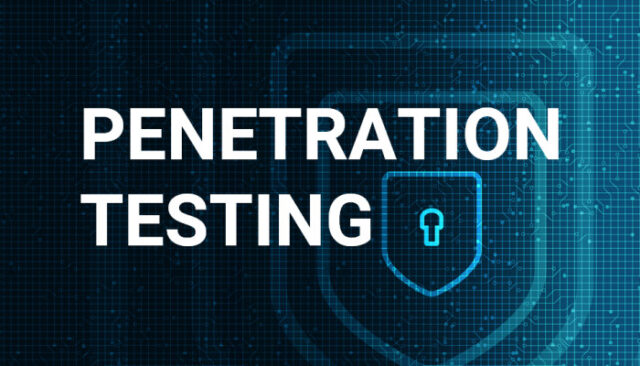Considered one of the most effective cybersecurity assessments, penetration testing (pen test) has become increasingly popular for quick analysis of cyber risks and also provides easy solutions to mitigate them.
Penetration testing involves a qualified ethical hacker scaling the cybersecurity wall built by a company and deducing the loopholes in the situation. This testing method is one of the important methods for data regulations and for the security of the establishment.
Regulation requirements and the industry profile of the organization usually determine the conduction of penetration testing. Stick to the end of the article, as the importance of penetration testing in compliance and regulation requirements is explained below.
About Penetration Testing

Penetration testing involves a hack-like stimulus to assess and exploit the vulnerabilities in a network, website, or web application. After performing penetration compliance tests, experts prepare a report documenting the risk and probable remedies to the problems. Once the remedies have been used, another scan takes place to ensure no loopholes exist and the safety and sanctity of the system and stored information are maintained.
Some of the best benefits of penetration testing include:
- Optimizing security to boost safety against the latest vulnerabilities
- Vulnerable network components and misconfigurations can be easily removed
- Helps in building trust among clients
- Prepares for security audits
- Aids in understanding the robustness of the controls
How Does Penetration Testing Work?
Penetration testing is maintained in the following steps; reconnaissance, scanning, gaining, and maintaining access.
Pen testers gather as much required information from public or private sources to gain knowledge about the internal working of the target system. This stage helps in chalking out an initial plan to attack the target system. Once the required information has been procured, testers use various tools to scan the system or the website for possible vulnerabilities. These tools are usually determined based on the information procured from domain registration information retrieval, network scanning (non-intrusive), and internet searchers.
Then the testers use methods to gain system access through SQL injection, social engineering, or malware. Once the access has been made, testers have to maintain the access long enough to understand the potential impact.
How Much Access Is Given in Penetration Testing?

Depending upon the testing goal, various levels of access are given to pen testers.
The three levels are:
- Opaque box: Without any knowledge of the internal system, the testers act as hackers to understand the possible loopholes in the system
- Semi-opaque box: The testers know the algorithms, code, and structures of the internal system of the target, and therefore the tests are designed to understand the design in detail, including understanding the architectural diagrams of the system
- Transparent box: In this scenario, testers can access system artifacts, including binaries, containers, and servers running the system. Although this accessory demands the highest privacy for penetration testing, it also provides maximum assurance in the least amount of time.
Penetration Testing and Compliance

1. For FINRA Compliance
FINRA Compliance rules include all organizations and all financial establishments using effective security controls. Penetration testing helps to identify cybersecurity threats. One can perform detailed reviews even on a regular basis or after key changes ( access control or firm change).
2. For HIPAA Compliance
HIPAA stands for Health Insurance Portability and Accountability Act. To ensure the security and confidentiality of the medical information shared, health practitioners use technical, administrative, and physical safeguards to protect the information.
Usually, penetration testing is not applied for HIPAA, but the privacy of the medical information has to be ensured; therefore, penetration testing for HIPAA involves non-technical and technical evaluations that include white hat hacking. If found compromised, HIPAA can make healthcare practitioners pay a fine between $100- $50, 000 depending on the situation.
3. For ISO 27001
A part of the IEC/ ISO set of standards, ISO 27001 is a popular security standard. It contains a unique framework and ensures that all vulnerabilities are easily detected and mitigated. Updating security barriers to meet new threats are also considered within ISO 27001.
4. For PCI Compliance
PCI DSS stands for Payment Card Industry Data Security Standard. This includes security standards for companies that deal with credit card information (accepting, processing, transmission, and storage) and ensures a safe environment for the users.
Penetration testing for PCI involves merchants filling out SAQ C, and SAQ D and a formal audit. Organizations that fall under PCI DSS have to perform penetration testing annually or if some significant changes are made to the infrastructure.
5. For SOC2 Compliance
SOC2 involves third-party insurance that an establishment is meeting privacy and security rules.
SOC2 has two requirements:
- This includes the identification of new vulnerabilities caused due to changed configuration and susceptance of the existing network to new vulnerabilities
- With the inclusion of penetration testing, a variety of evaluations are used for internal audit assessments and established specifications.
What Should You Consider?
While penetration testing can provide many benefits, the procedure can be expensive and labor-intensive; therefore, before hiring pen testers, consider the following factors.
- Understand the need for your testing; you might need to understand whether your system is susceptible to vulnerabilities or require penetration testing to comply with rules and regulations. Penetration testing usually includes a varied service range. Understanding the type of test you need will help in narrowing your search.
- Take advice from trusted advisors to find information about the best testers in the market.
- Consider the reviews and ratings provided on the company website. You can also talk to some of their clients to understand their work ethic in a better light.
Bottom Line

Governments and consumers are always at risk of increasing cybersecurity crimes. These insecurities pose threats both at national and personal levels. Penetration testing helps assess the loopholes and provides required remedies to mend the situation. These tests help safeguard the sanctity of an organization and maintain the privacy of the information.
To hire penetration testers, ensure you do thorough research and read all reviews and feedback before making the final choice.






